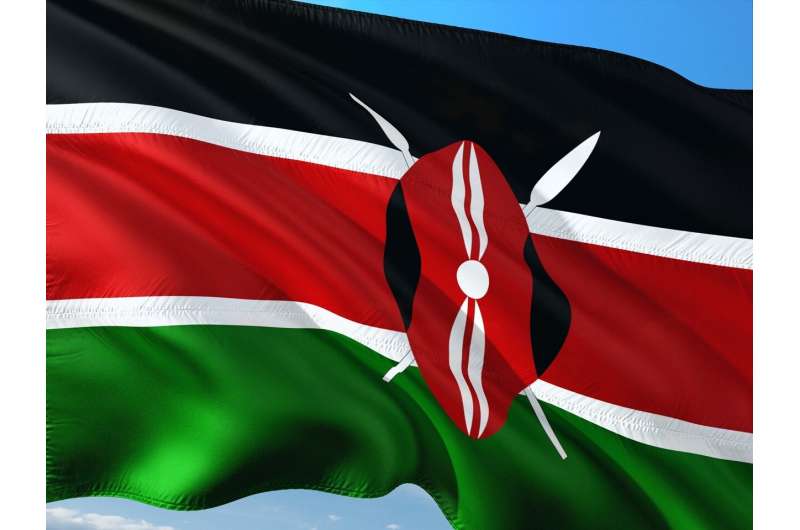Kenya's farmers have lots of digital tools to help boost productivity. How they can be made more effective?

Digital agriculture is as an almost magical trigger for promoting successful farming, even among smallholder farmers in .
Its proponents argue that using digital tools to, for instance, generate records and calendar schedules, , manage their resources more efficiently, and connect with organized markets, all while reducing post-harvest losses.
But not all researchers are convinced that digital solutions are the answer to farmers' problems. that the hype around these tools from the real, on-the-ground challenges farmers face.
One Kenyan avocado farmer, speaking to a researcher in 2021, : "We don't need another app." Rather, he said, "Crates! We need crates to avoid our avocados getting smashed on the way to the buyer."
Kenya has become a particularly ripe market for digital agriculture tools. The country, one of Africa's major technology hubs, has been labeled the "." Eighty percent of its smallholder farmers own mobile phones within Kenya's well established mobile money ecosystem.
We are researchers in agricultural economics. In we examined Kenya's digital agricultural landscape to see what solutions were available and whether these were addressing farmers' real challenges.
We took an inventory of all the digital agriculture tools listed in Google's Play Store, assessing the technology and services offered by these tools with information from their own homepages. Some are phone apps; others are innovations whose hardware can be mounted onto farm machinery or are standalone gadgets like handheld scanners. We also studied peer-reviewed articles and reports to see where such tools had documented impacts, with a particular focus on Kenya.
We found that, over the past decade, the number of digital tools available to smallholder farmers has greatly increased. These tools have, as documented in the literature we reviewed, helped farmers (in Kenya and elsewhere) improve their knowledge, access markets, and boost productivity and income.
However, better integration of digital solutions with traditional farming practices is crucial. Field experts must support farmers in applying digital advice and provide hands-on guidance. Additionally, combining these solutions with local knowledge, cultural practices and market development will make them more effective and beneficial for farmers.
What tools are available to farmers?
is one of the fastest and most effective ways to reduce poverty, ensure food security, and of developing countries' .
But in Kenya, as in many other African countries, farmers struggle with low agricultural productivity. It is than the global average.
One of the reasons is limited agricultural services, such as extension services. These services offer technical advice and support and help farmers to access the inputs they need for production, like fertilizers and seeds. In Kenya, there is only . Farmers high quality seeds and fertilizers.
Many digital agricultural tools promise to resolve these issues.
In our study we found that the number of digital tools available to farmers in Kenya had tripled over the past decade, from 17 in 2013 to 52 in 2023.
The development of these tools surged in 2016 but has slowed down recently. This may be due to market saturation and a focus on improving existing tools. There's a shift from tools that offer general farming information (which could also be found in text books or advisory materials) to "farm-specific" tools. These provided personalized advice based on farm or livestock-specific data that farmers either entered manually or was collected digitally by sensors.
Some examples of apps include , which provides information and enables learning for farmers, and the , offering advice on soil health based on farm-specific testing. Another is , which connects farmers with financial services.
Most of these tools are developed by private companies, though some work with public extension services. Many are designed for farmers with smartphones. Others rely on feature phones or use intermediaries to connect less tech-savvy farmers with the services they need.
How do digital tools address farmers' challenges?
The literature review part of the study allowed us to identify several ways digital solutions can and do help farmers in Kenya.
- Improved knowledge: Digital tools help farmers to find vital information on farming practices, pest control and market prices. This and higher incomes.
- Better crop and livestock management: Digital tools such as help livestock farmers improve feeding, breeding, hygiene and disease control. This leads to .
- Access to inputs: Digital tools are to certified seeds and fertilizers. This reduces the risk of counterfeit products being used. It also helps farmers to achieve better yields.
- Access to markets: Some tools aggregate their products, increasing their bargaining power and allowing them .
- Financial services: Tools like DigiFarm provide farmers with , which helps them plant on time and use fertilizers effectively. Some tools, like , offer —crucial in a time of climate uncertainty.
However, digital agricultural tools' effect on food security and the environment remains unclear.
What is missing?
The effectiveness of farm-specific solutions depends on accurate and reliable data. Challenges like limited access to smartphones and data, as well as digital literacy, must be addressed.
We also found that few tools explicitly target sustainable practices or offer climate adaptation solutions. Integrating metrics like water use efficiency and soil health into digital platforms can help farmers make eco-friendly decisions, and adapt to weather-related risks. Governments and agencies could incentivize such climate-resilient practices through digital platforms.
There are also gaps in understanding the long-term effects of digital tools on farm productivity, food security and environmental sustainability.
Finally, comprehensive and rigorous evaluations are needed to understand the full effect of these tools: their usability, affordability, and how easy it is to integrate them with existing farming practices.
Provided by The Conversation
This article is republished from under a Creative Commons license. Read the .![]()



















